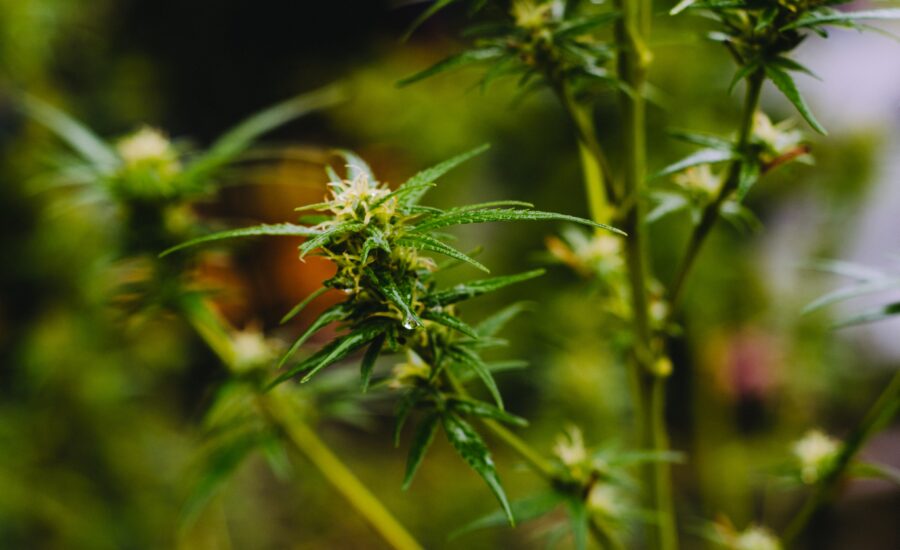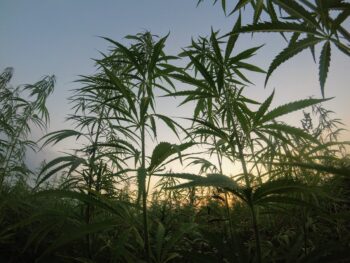With the constant threat of climate change, both agriculturalists and environmentalists are taking a hard look at the sustainability and environmental impact of the crops they plant, along with cultivation practices. Whether you are a cannabis consumer or are considering venturing into the cannabis industry as a business owner, you may be wondering, “Is cannabis environmentally friendly?”
Aligning with your own personal values for sustainability is important in any industry. Keep reading to learn about the successes and challenges of cannabis sustainability.
It Is Called Weed For a Reason
One common slang term for cannabis is “weed.” This endearing name was given to the plant because it grows like one, which is a good thing for both farmers and the environment. Though growing techniques have advanced throughout the last several decades and commercial plants are often grown indoors, at a base level, cannabis can be successfully produced in a variety of climates and soil types.
The Difference Between Hemp and Cannabis
Without taking up too much time, it is worth noting that the terms cannabis and hemp are often used interchangeably, though hemp is essentially the low-THC version of the plant. The foundational differences in the plants can be compared to oranges and lemons.
Cannabis plants grown for high-THC content are often grown indoors, but can also be grown in greenhouses or outside if climate permits and the specific strain is tolerant of those conditions. Not many commercial cannabis growers outside of California use outdoor grows. Hemp that is grown for CBD and other cannabinoids can also be grown in any of those three environments but is more tolerant of outdoor conditions than plants cultivated for high THC.
“Industrial hemp” is often used for purposes besides cannabinoids such as textiles, biofuel, paper, and other bioproducts. It is grown in stalks, similar to corn.
Cannabis Sustainability Throughout History
Both hemp and cannabis have been cultivated for thousands of years across numerous continents. One of the oldest ancient artifacts known to man is a piece of hemp cloth that has survived over 8,000 years. There was even a point in time when growing hemp was required for early colonists in North America. The landscape of cannabis cultivation has changed drastically over the centuries, and cannabis sustainability may be even more important as environmental impact becomes a prevalent concern, globally.
Is Cannabis Environmentally Friendly?
Cannabis is one of the most useful, sustainable, and environmentally friendly plants on the planet. Of course, growing practices can differ greatly from one cultivator to the next, and cannabis sustainability is largely dependent on whether green growing and harvesting practices are prioritized by the business. Here are some of the environmental benefits of hemp and cannabis.
Organic Growing Practices
The vast majority of hemp and cannabis plants can be grown organically. They are naturally resistant to most pests, which means there is no need for fungicides, pesticides, or herbicides. Outdoor cannabis is greatly benefited by the presence of ladybugs.
Phytoremediation
Hemp is a great commodity to rotate in during fallow (rest) cycles for other field crops. Unlike many crops, hemp actually improves the soil in which it grows by giving back nitrogen and removing toxins. This process is called phytoremediation. Hemp has been used for phytoremediation to remove toxins from the Chernobyl nuclear site for nearly three decades.
Challenges of Cannabis Sustainability For Indoor Cultivation
Unlike traditional agriculture crops like corn and soybeans, cannabis containing THC over 0.3% per dry weight is not federally legal and therefore cannot receive federal funding or research allotment for sustainable growing practices. Unlike outdoor grows, indoor cultivation does require a significant amount of resources, especially energy. Luckily, over time, environmentally-conscious cannabis professionals have begun to find solutions to this and other problems.
Energy Use
To better understand how indoor cannabis cultivation facilities can reduce their energy use, the Sustainable Cannabis Coalition sponsored a project to evaluate methods of reducing cannabis cultivation facility energy use. Researchers at Dartmouth College metered energy use from dehumidifiers, grow lights, and cooling systems at two facilities. Preliminary results from the study suggest that the facilities are currently using up to three times more energy than is required. The hope is that growers can use this research to help inform and adjust their energy use.
Plant Material
With industrial hemp, the entire plant can be used to make hemp products. For cannabis, any portion of the plant that does not contain THC or other cannabinoids is left unused. This is typically the stalky part of the plant. It is federally illegal to move cannabis plants across state lines, even for composting, so growers may end up throwing away large amounts of plant material. Some growers have found that they can compost the material themselves and use it to improve soil quality.
Packaging Waste
As with many consumer goods industries, products often generate waste such as packing materials and the packaging that contains the products. Many states do not allow cannabis packaging to enter recycling programs. Others, like Colorado, do allow these products to be recycled. Some dispensaries even have loyalty programs to incentivize customers to bring back clean, used packaging like plastic bottles and disposable vape pens to be recycled or professionally sanitized for reuse. It is worth mentioning that Hemp bioplastic is a fully biodegradable alternative to standard plastics and is made from petrochemicals.
How To Maintain Cannabis Sustainability In Your Business?
When starting a business, one of the first things many owners do is build out their brand identity which includes core values. If your brand is committed to cannabis sustainability, consider owning that as part of your values or mission statement as a pillar you use to guide your business practices. Creating thoughtful, strategic, and repeatable processes can help you identify any gaps in cannabis sustainability and maintain the effectiveness of your solutions. Whether that is the reduction of water and energy use, minimizing waste, recycling, or other environmentally friendly practices.
Having a clearly defined set of standard operating procedures (SOPs) is great for training new employees on how your business facilitates environmental consciousness. They eliminate any variables within a workflow, including cannabis sustainability efforts, and they can help protect your business when used in conjunction with proper compliance.

